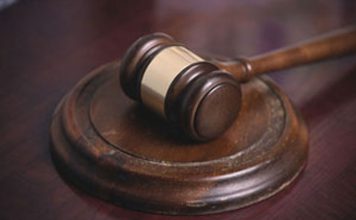This Fourth of July, I’ll stand at the Morgan Hill intersection
of Del Monte and West Dunne avenues serving as a volunteer marshal
during the community’s popular Independence Day parade.
This Fourth of July, I’ll stand at the Morgan Hill intersection of Del Monte and West Dunne avenues serving as a volunteer marshal during the community’s popular Independence Day parade. I know I’ll feel a pride and an awe each time I see pass by the beautiful red, white and blue symbolizing the United States of America.
I’ll also be sure to put up my own American flag this holiday weekend to wave in the breeze over my home’s driveway. It’s a ritual repeated in small towns and big cities in every state of our great land.
Despite our serious flaws as a country, I’ve always believed we live in the greatest nation in history. I believe in America’s promise. But recently, I’ve had some serious doubts. I wonder if our country might be heading down the wrong road in protecting our freedoms.
Last week, the House of Representatives passed a resolution proposing a constitutional amendment letting Congress prohibit the destruction or debasement of the American flag without violation of the First Amendment’s right to free speech. It would grant Congress the “power to prohibit the physical desecration of the flag of the United States.”
Essentially, if this amendment might find its way into the Constitution, anyone showing any material sign of disrespect toward the American flag might be found guilty of a felony.
The Senate now must consider the resolution. In the past, it has stopped other attempts of the proposed amendment from continuing. But as a result of last November’s election, that body now has more conservative members.
Sen. Arlen Specter, R-Penn., chairman of the Senate Judiciary Committee, plans to hold a hearing shortly after this weekend’s holiday recess. And Senate Republican Leader Bill Frist, R-Tenn., is expected to schedule a floor vote soon after. If it passes the Senate, the bill will go to all 50 state legislatures. It will take a total of 38 states to ratify the flag-protection amendment.
This recent news has prompted me to reflect on the history of the American flag – and what it might mean to be truly patriotic toward a symbol.
No historian can say with certainty who first designed and sewed the stars and stripes version of the American flag. On New Years Day of 1776, General George Washington raised a new flag at his Boston camp. That banner consisted of 13 alternating red and white stripes, but with the crosses of St George and St. Andrew displayed on the upper left corner. Washington’s “flag of the Grand Union” symbolized the British throne. It conveyed the hope a political resolution might be achieved between the colonists and the crown.
As the revolution continued, it became clear no peaceful settlement would be achieved. So on June 14, 1777, Congress passed a resolution that the American flag should be “13 stripes alternate red and white and the union be 13 stars in a blue field representing a new constellation.”
More than a century later, June 14 would be federally honored as the flag’s birthday. That date is now officially recognized as Flag Day.
Legends grew around the flag. A Philadelphia Congressman named Francis Hopkinson took credit for its design, but not all historians take his claim seriously. And Philadelphia seamstress Betsy Ross most definitely did not stitch together the first American flag at George Washington’s request. Her grandson William J. Canby fabricated that tale in 1870. His story was popularized in a 1909 book titled Evolution of the American Flag.
The most probable story is the flag’s design was created by an anonymous congressional committee.
Various versions of the American flag have evolved over the years. It wasn’t until President William Taft signed an executive order on June 24, 1912, that the flag finally found its federally established proportions and arrangement of stars and stripes.
As for the designation of what the flag’s three colors mean, there presently exists no official definition. One tradition holds the red represents courage and integrity, the white stands for liberty and equality for all, and the blue symbolizes self-sacrifice and devotion to country.
This weekend, a whole lot of red, white and blue will be displayed throughout our South Valley region. And I hope, along with the fireworks and sparklers, all those flags might ignite some serious discussion on whether this country now needs a law to protect our national symbol. Much more serious matters are at hand. Flag-burnings are extremely rare events.
I doubt the folks who designed the flag back in June 1777 would consider this proposed amendment a wise use of today’s Congress’s time. Constitutional amendments must be saved for important matters. They must not be used by politicians to gain cheap public relations mileage with constituents in the name of “patriotism.” And they most definitely must never ever be used to erode our cherished freedoms. That would be the ultimate slap in the face to those who gave us our banner – and those men and women who died under its stars and stripes.
If it passed, I believe the proposed amendment would only result in a dramatic increase in flag “desecration” incidents. The proposed amendment would make such acts as flag-burning a much more powerfully symbolic gesture. The few incidents of flag-burning each year will almost certainly increase by hundreds – and not just by young anarchists. Grey-haired grannies and grizzled war veterans – tears flowing down their wrinkled faces – might find themselves torching Old Glory.
The other day as I got my own American flag ready for this weekend, I pondered the probability of myself ever setting it aflame. I’m proud it represents our American freedoms. But if those freedoms ever came to jeopardy and I felt I could somehow protect them by “desecrating” the symbol of America, I would not hesitate to light that match.
My Independence Day hope this weekend is that no American citizen might ever be forced to resort to that act. This Fourth of July, I still believe in our American flag.
Martin Cheek is the author of ‘The Silicon Valley Handbook.’












